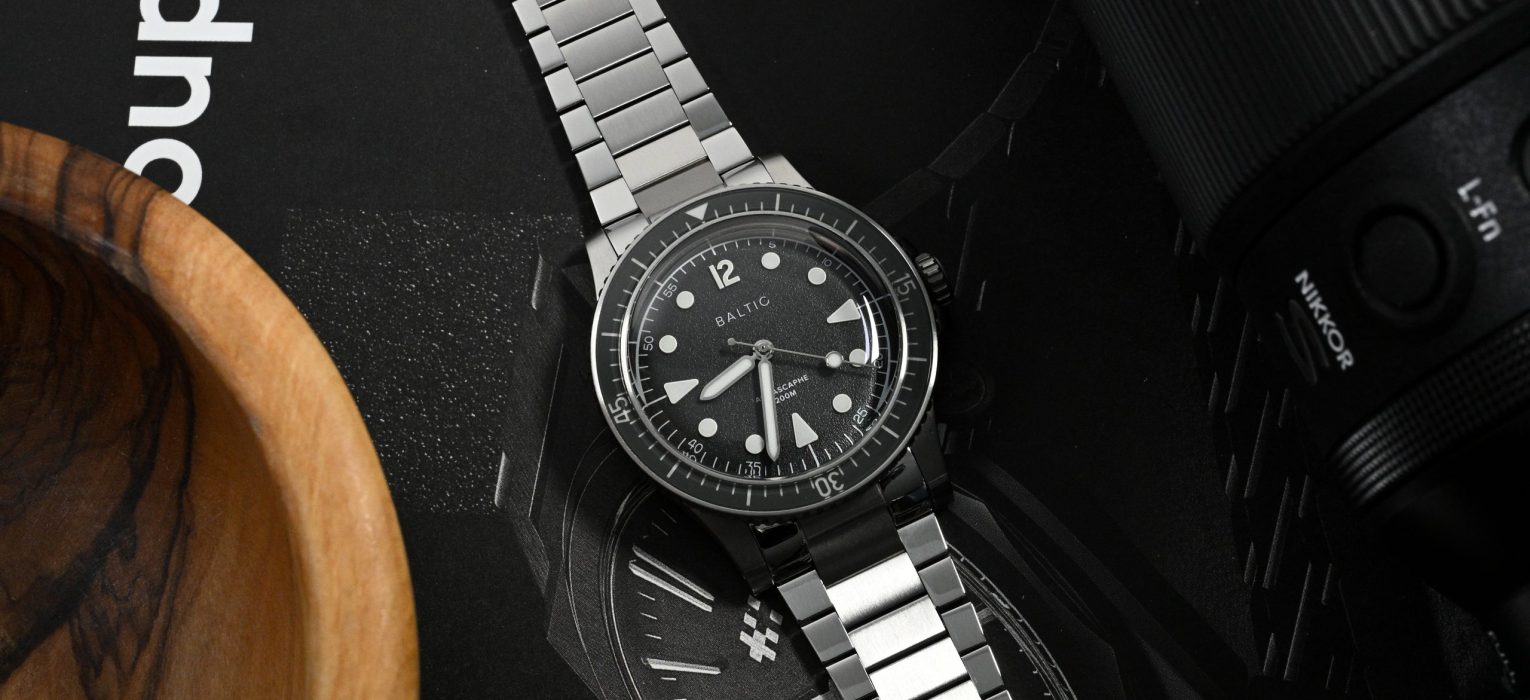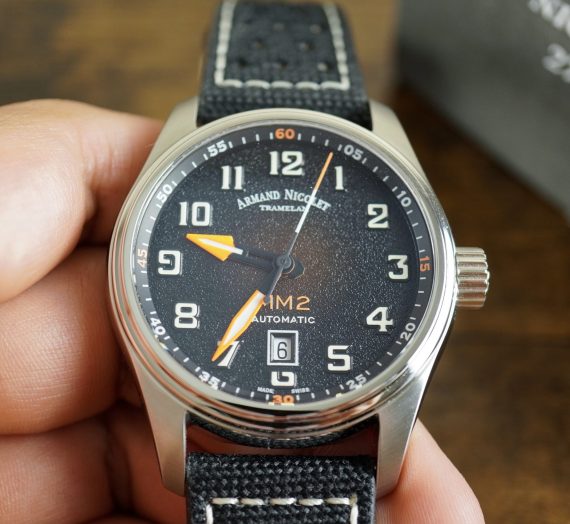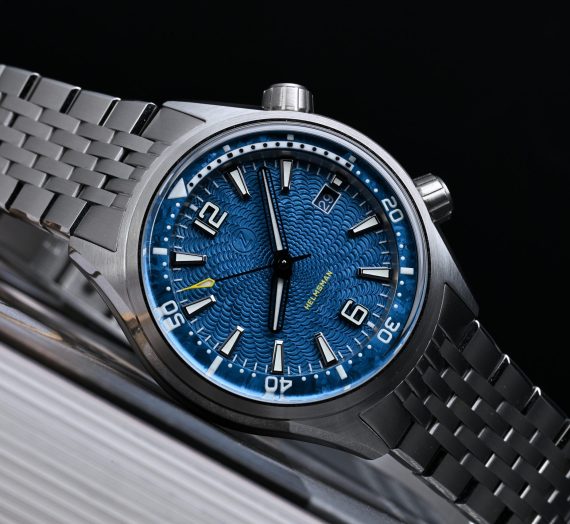Disclaimer: this video/review was not sponsored by Baltic or any other entity.
Video
Review
Baltic, though not the oldest in the micro-brand universe, has become one of the more recognized and respected names in the space thanks to their 7-8 years of consistently well designed releases, and quality products that back up their designs. In the relatively short time since its founding, the brand has managed to transcend the “micro-brand” label, with physical storefronts in Paris, London and New York, and a polished marketing and distribution approach that rivals that of far larger companies.
My personal encounter with Baltic began back in 2019 with the original Blue Gilt Aquascaphe, one of my first micro-brand watches, so it feels particularly special to be reviewing this new Aquascaphe MK2 today. It’s remarkable to see how far the brand has come since then, building out an impressive and diverse catalog that now includes everything from elegant dress watches to sporty chronographs. Over the years, I’ve also bought and reviewed many of their other watches, such as the HMS002, MR01 Salmon, Peter Auto Tricompax and the Hermetique Glacier.
I still remember when Baltic was frequently criticized for being “too expensive”, and even how founder Étienne Malec once took to Watchuseek to transparently explain his pricing strategy; an early gesture of honesty that earned my respect. Fast forward to now, and with the way prices have spiraled across the broader watch market, the roughly $800 USD price tag for this Aquascaphe MK2 on its flat link bracelet feels almost refreshingly reasonable.
Offered in both 37mm and 39.5mm sizes, the MK2 isn’t a total reinvention of the Aquascaphe line but rather a thoughtful evolution: a more refined, technically improved take; and while it isn’t a complete revamp of the lineup, I think it is both a wonderful update that can also comfortably live alongside the classic.
Let’s check it out!
Case
The case feels immediately familiar to anyone who has handled a Baltic before: for better or worse. My measurements have it at 38.75mm across the bezel, 37.5mm across the mid-case, and 12.85mm in total thickness including the domed sapphire crystal, proportions that strike a nice balance between presence and wear-ability. At 3 o’clock sits a 6.25mm screw-down crown embossed with the brand’s logo, which feels well-sized and easy to operate.
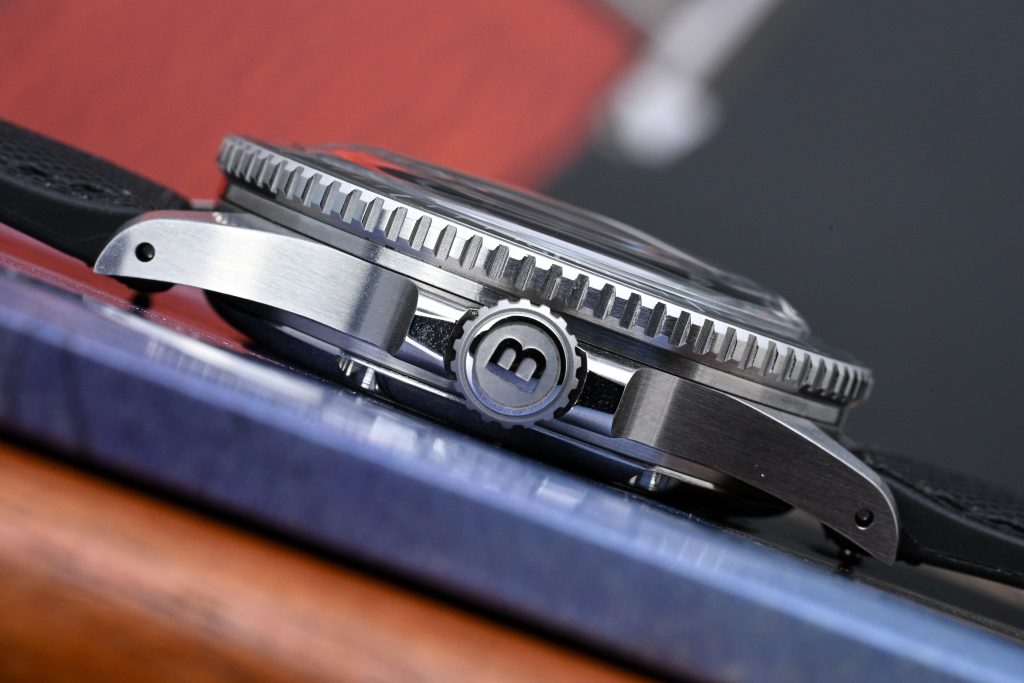
The stainless steel case follows an established formula, one we’ve seen across most of their lineup, which brings both pros and cons. On the upside, nearly all their bracelets are interchangeable (save for the Prismic). On the downside, the mid-case design itself is starting to feel a touch too familiar, borrowing a bit too heavily from the plethora of vintage divers that lacked much in the way of distinctive personality.

Thankfully, there are redeeming details here: the drilled 20mm lugs are a practical, strap-friendly touch, and the Blancpain-inspired bezel and domed sapphire crystal elevate the overall aesthetic considerably. The sapphire insert’s soft, diffused glow beautifully recalls the warmth of vintage bakelite bezels, and the 120-click unidirectional bezel feels precise and tactile in operation.

Around back, a solid case-back features engraved patterns and technical markings, sealing the watch to a capable 200 meters of water resistance.
Dial
The dial is where Baltic has made the most updates, and it’s also where the watch distinguishes itself clearly from the original Classic. The MK2 is available in four distinct colorways – blue, green, grey, and warm silver; each offering its own character while maintaining the brand’s signature vintage-inspired charm.

While much of the case remains similar to the original, save for the addition of crown guards and a slightly redesigned crown, the dial and bezel feel like a thoughtful evolution. The outer minute ring, for instance, now includes numbered markings at every five-minute interval rather than the simple ticks of the Classic, and subtle adjustments to the proportions make the track easier to read through the domed crystal’s distortion.
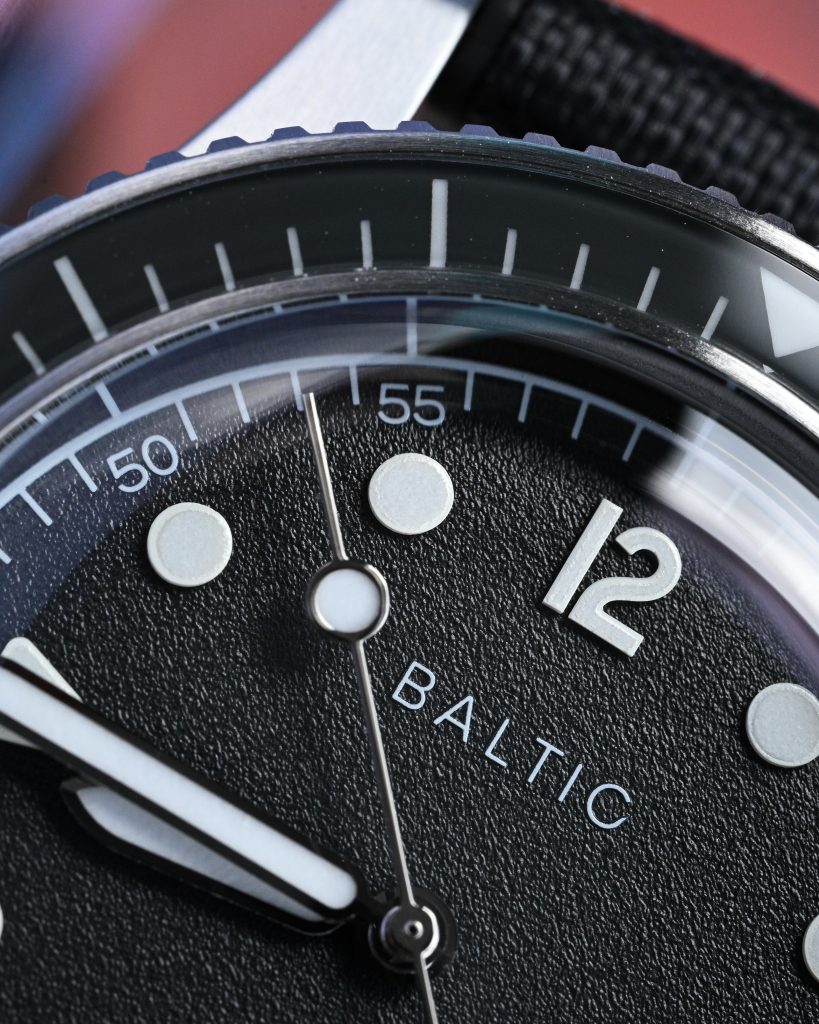
Moving inward, the sandwich dial construction has been replaced with solid ceramic lume block indices that rise proudly off the dial surface. These tall, Super-LumiNova–filled markers, with triangles at the cardinal points, an Arabic 12, and circles elsewhere, add a striking sense of depth and dimensionality. The handset has also been reworked: the hour hand is now bolder with a larger lume plot, and both hands appear slightly thicker and better finished than those on the earlier Aquascaphe.

The bezel insert has received a similar refinement, trading its dot-based markings for finer, more utilitarian graduations that lend a slightly more modern and functional air. With the brand’s logo and depth rating printed in their familiar positions, the dial feels recognizable yet improved… a modernized take that maintains a vintage soul. Overall, the execution is excellent, the attention to detail strong, and while it feels a touch more contemporary than its predecessor, it still carries that unmistakable Aquascaphe identity.
Lume
The lume on the Aquascaphe MK2 is similar to what they did with the Hermetique, and is one of the more impressive upgrades over the original Classic model. Unlike the Aquascaphe Classic, which used a sandwich dial with a lumed bottom layer, the MK2 features ceramic-casted lume indices made from Super-LumiNova BGW9.
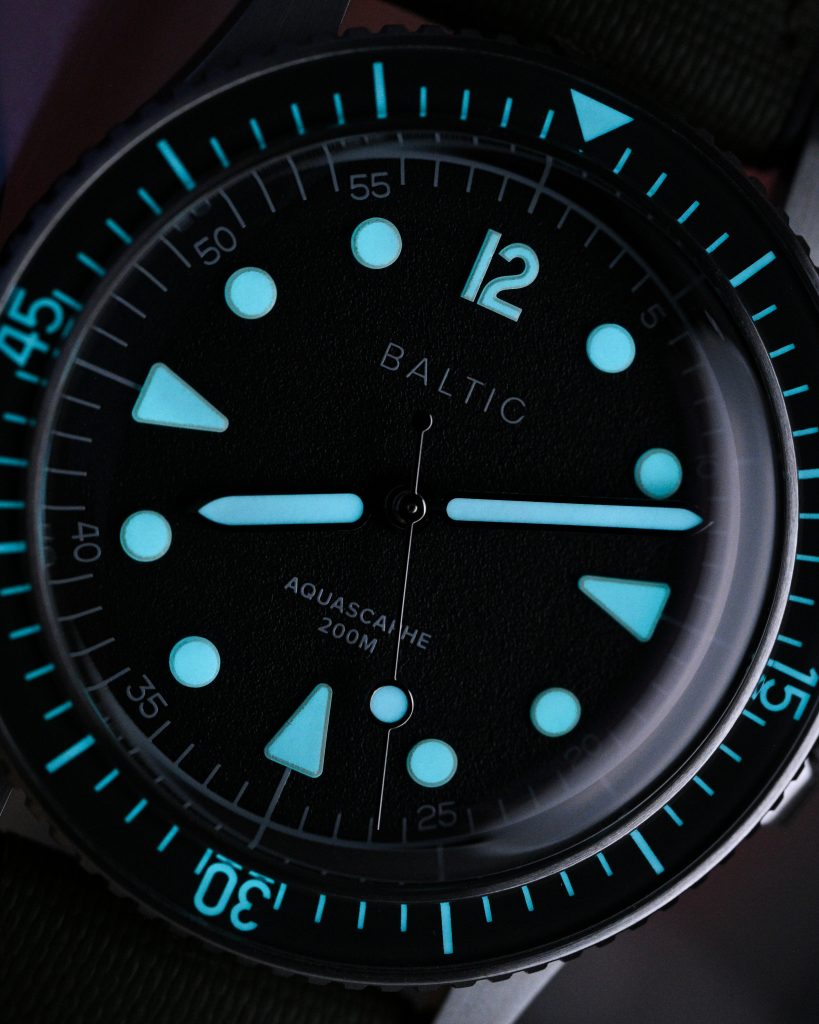
These raised indices give off a bright, even glow that lasts well into the night, while their three-dimensional structure adds depth and character to the dial: especially when viewed through the double-domed sapphire crystal, which introduces a subtle distortion that enhances the vintage charm. The hands and bezel are traditionally lumed, but both are highly potent and deliver excellent longevity in low light.
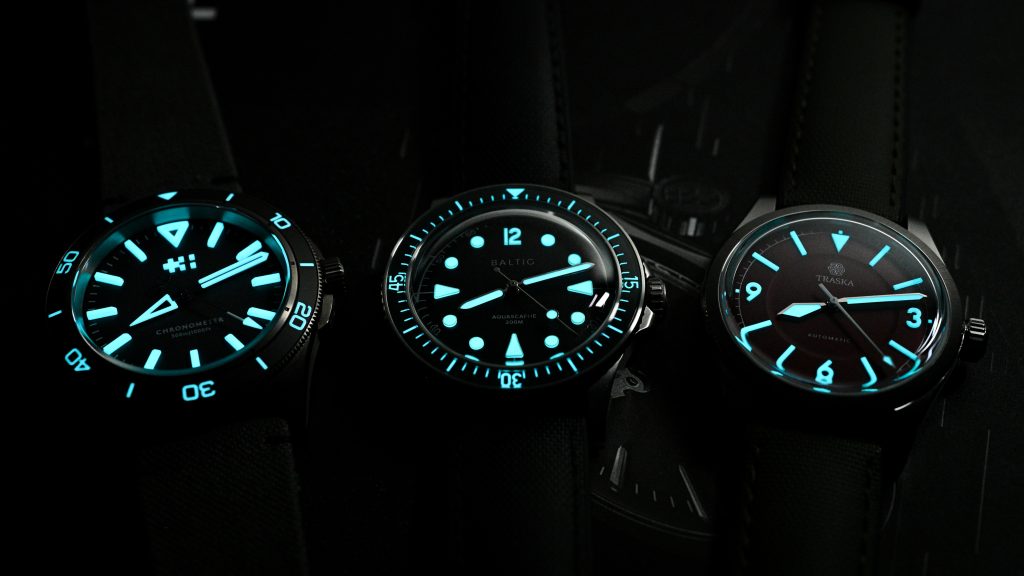
In direct comparison, the lumicast indices of the Baltic hold their own against the Globolight XP hands and indices on my Christopher Ward Lumiere and the Traska Summiteer 38.
Movement
The watch is powered by the Miyota 9039, which is essentially the same workhorse as the Miyota 9015 but in a time-only configuration without a date complication. As I’ve mentioned in earlier reviews of watches with these movements, the 9015 (and by extension the 9039) is one of my favorite movements in this price range thanks to its reliability, and notably slim profile. It sits thinner than many comparable Sellita, ETA, and Seiko calibers, allowing for slimmer case designs that wear comfortably on the wrist. From my experience, Miyota movements don’t keep as good time as some well regulated Sellitas and ETA movements, but this particular watch was running comfortably at +3 spd.
On The Wrist
I’m glad Baltic decided to add a slightly smaller option to the Aquascaphe lineup, but I requested to review the 39.5mm version, which wears almost identically to the original 39mm Classic. My measurements put it at about 38.75mm across the bezel, 37.5mm across the case, and 46.5mm lug-to-lug, excellent proportions for a vintage-inspired dive watch.
On my 6.75″ wrist, it feels perfectly balanced, with its 12.85mm thickness (including the generously domed sapphire crystal) giving it a satisfying presence. The height is well distributed between the case-back, mid-case, bezel, and crystal.
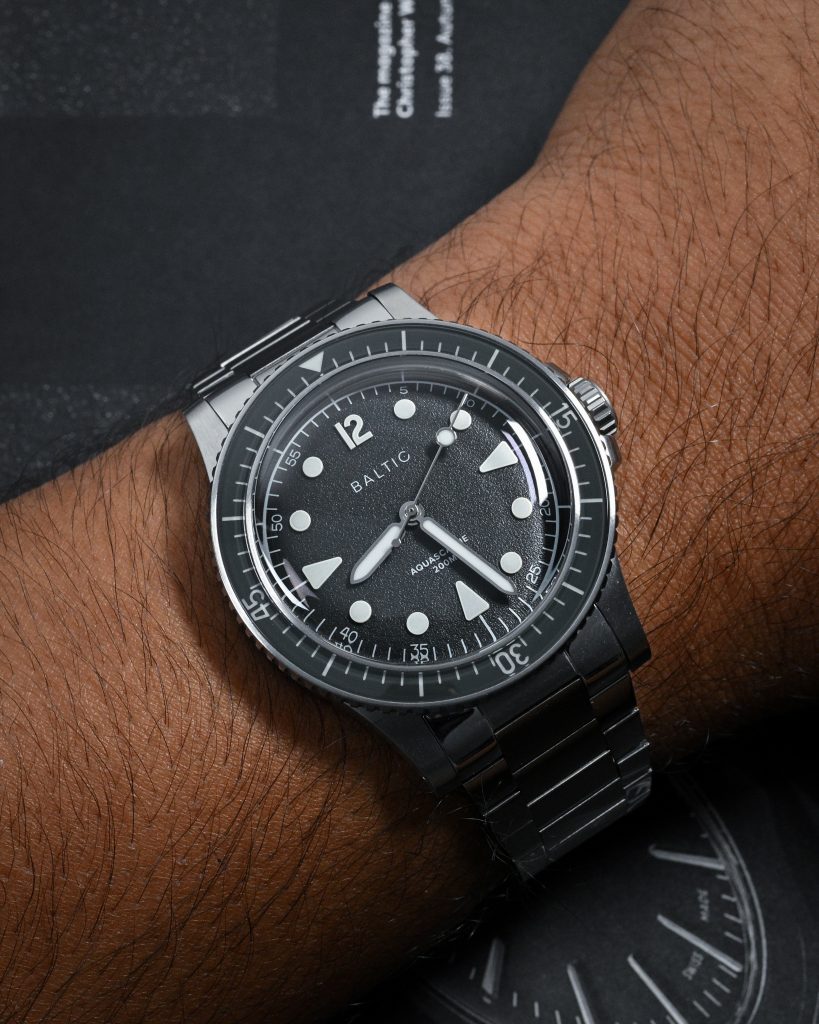

I borrowed this watch on the flat link bracelet, a surprisingly divisive choice judging by Instagram replies to my stories, but having owned the Classic on the beads-of-rice bracelet (which also works perfectly with this new case, btw), I wanted to try something new, and I’m glad I did. The updated milled clasp is a solid improvement over the older press-fit design, though an on-the-fly micro-adjustment would’ve made it even better, as that’s quickly becoming standard in this price segment.
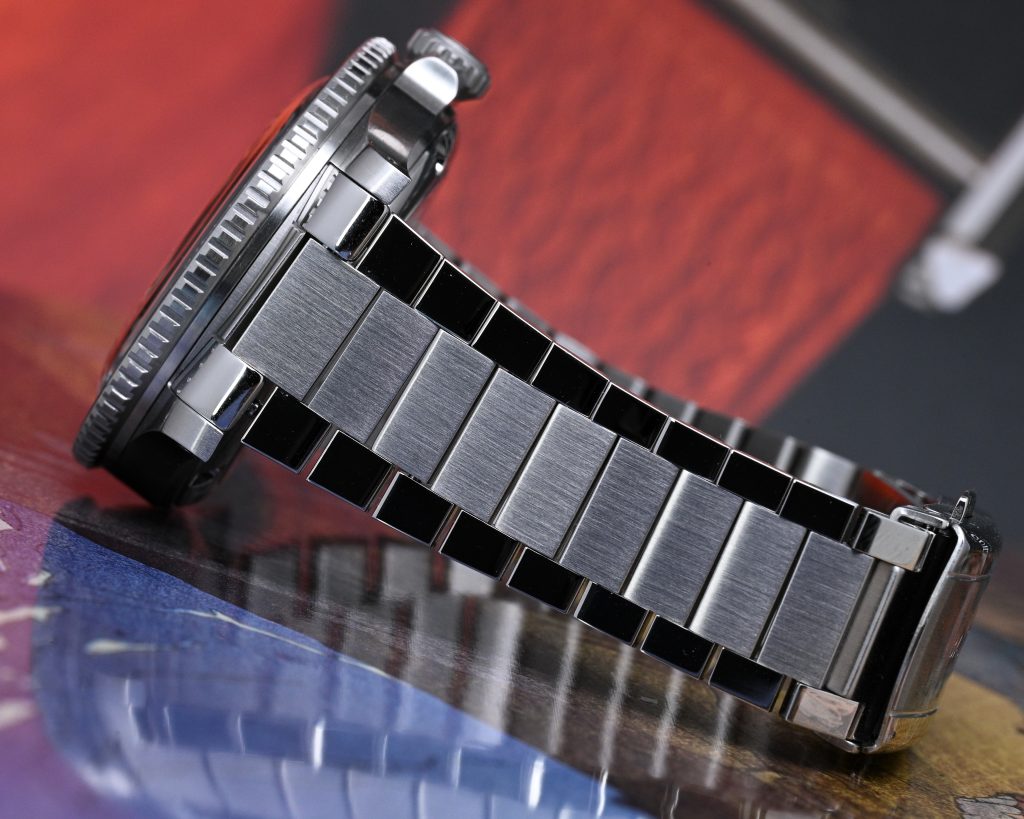

The bracelet itself feels supple and comfortable, with a softness reminiscent of true vintage bracelets, though I couldn’t remove enough links on the 6 o’clock side to achieve a perfectly centered fit… a quirk I’ve also encountered with vintage Rolex bracelets. Overall, the watch delivers a very enjoyable wrist experience, provided you appreciate the charm and proportions of classic dive watches. If you’re after something more modern in design or construction, options like Zelos or Christopher Ward might better scratch that itch.
Wrapping Up
The Aquascaphe MK2 may not be the cheapest dive watch in the microbrand space, but that’s perfectly fine, as it delivers a uniquely satisfying experience that justifies its price and easily sets itself apart from the sea of competitors. Baltic continues to lean into its vintage-inspired roots, creating a watch that feels cohesive, deliberate, and full of character. For the most part, it feels well considered, from the case proportions to the luminous ceramic-cast indices.
The bracelet isn’t perfect… but paradoxically, it’s also a joy to wear, with a suppleness that channels true vintage charm. In many ways, the MK2 captures the essence of owning a vintage diver without any of the headaches that come with vintage movements or fragile components. You get the romance of the past combined with the reliability of modern manufacturing, durable materials, and wonderfully bright lume. There’s a lot to love here if you’re drawn to this aesthetic, and if you are, I can’t recommend the Aquascaphe MK2 enough.

